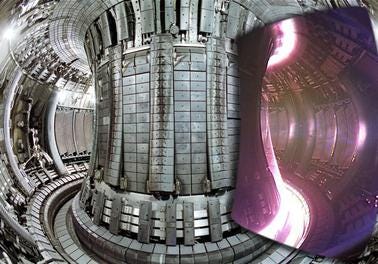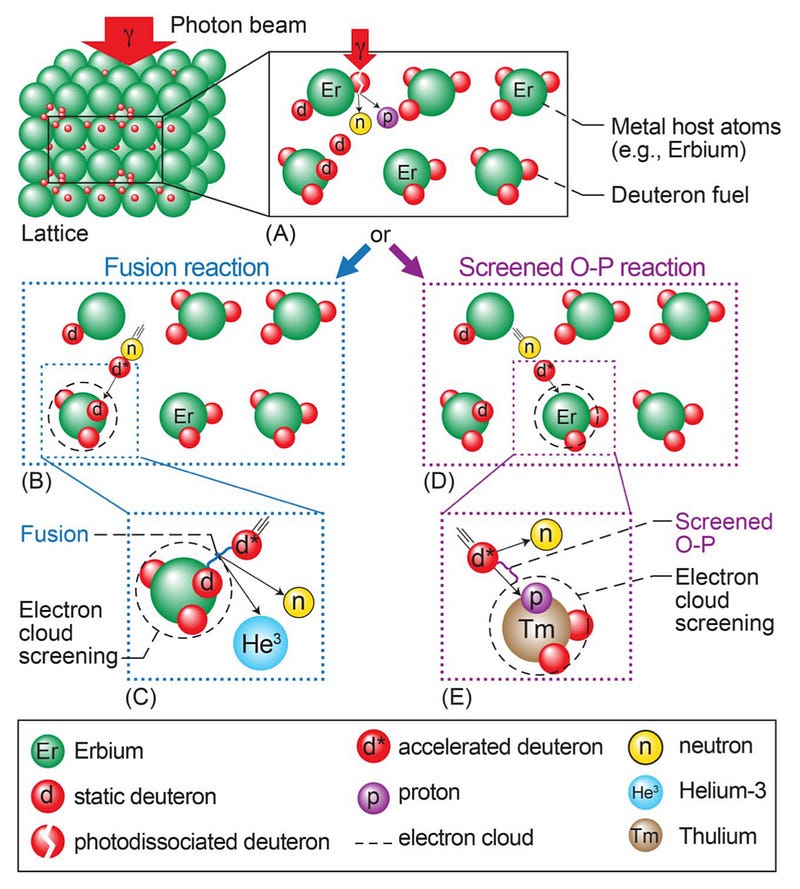Unlocking the Future of Clean Energy: NASA's Fusion Breakthrough
Written on
Understanding Fusion Energy
When you think of NASA, iconic events like the Moon landings and the Voyager missions might come to mind. However, to advance humanity's exploration of space, NASA requires groundbreaking technology. Over the years, NASA engineers have developed diverse innovations, from cochlear implants to scratch-resistant lenses, and even memory foam. Recently, they have made a significant discovery: a novel method of fusion energy that addresses many existing challenges associated with this promising technology. So, has NASA successfully cracked the code on fusion energy?
Before delving into NASA's remarkable invention, it's essential to examine current fusion methods, their challenges, and the potential of fusion power to transform our world.
Nuclear fusion involves combining two atoms with immense force to create a larger atom, releasing a tremendous amount of energy in the process. However, achieving fusion requires substantial energy input. For example, while fusion powers the Sun, it only occurs in its core, where extreme temperatures and pressures allow hydrogen to fuse, which is the simplest element to combine.

Challenges of Current Fusion Techniques
In theory, we could leverage fusion to sustain our energy demands, but Earth’s conditions make this difficult. The lower pressure on our planet requires even more energy to achieve hydrogen fusion. Moreover, the fusion reactors currently in use are inefficient, yielding less energy than they consume.
The three main fusion methods rely on large, complicated systems. Magnetic confinement and magnetic target reactors employ powerful superconducting magnets to compress hydrogen plasma, but maintaining these magnets at ultra-low temperatures demands significant energy. Internal confinement reactors use lasers to heat hydrogen pellets to extreme temperatures, yet these lasers also require complex and energy-intensive machinery. These inefficiencies prevent us from achieving a net positive energy output from fusion reactors.

The Promise of Fusion Energy
Despite these challenges, fusion energy holds immense promise for addressing global energy needs. It offers the benefits of nuclear power—such as minimal carbon emissions and high energy output—without the associated risks of nuclear disasters or hazardous waste. Successfully harnessing fusion could enable a transition to a sustainable, carbon-neutral society.
NASA’s Innovative Approach
NASA has made strides in this direction. While exploring energy solutions for deep-space missions, scientists at NASA developed a fusion reactor that is simpler, more compact, and potentially more efficient than existing designs. This innovative device, known as the lattice confinement reactor, employs a unique method to densify hydrogen atoms.
Instead of relying on massive machinery, NASA engineers utilized a metallic lattice of erbium saturated with deuterium, a hydrogen variant. Metals possess a crystal structure, forming a repeating lattice pattern at the atomic level. This allows hydrogen to occupy spaces between the metal atoms, creating a highly dense material known as deuterated erbium.

To achieve fusion, NASA engineers direct gamma rays at the deuterated erbium. This interaction causes some hydrogen atoms to disassociate into fast-moving neutrons and protons. The energetic neutrons then collide with other hydrogen atoms, facilitating the fusion process. Remarkably, this method does not require large lasers or superconducting magnets; just a piece of metal and a gamma-ray beam.
Advantages of the Lattice Confinement Reactor
The simplicity of this approach could lead to cheaper, more compact reactors, making the construction of functional fusion power stations more feasible. However, the question remains: why hasn’t NASA built one yet?
While initial experiments began in 2020, NASA is currently focused on increasing fusion events triggered by the gamma-ray beam and efficiently extracting energy, both of which present significant challenges. Nevertheless, tackling difficult problems is NASA's forte.
The first video titled "Science News: Cracks Found in Nuclear Fusion Reactor ITER" discusses the complexities and advancements in nuclear fusion technology, providing insights into the challenges faced in the field.
The Future of Space Exploration and Earth
If NASA perfects this fusion method, it could revolutionize the space industry. Spacecraft could be equipped with compact, non-radioactive power sources that deliver high energy for extended periods—essential for future Mars missions and deep space exploration.
Additionally, if lattice confinement reactors can be constructed using readily available materials, they could facilitate a swift and economical transition to fusion energy on Earth.
The second video titled "Fusion 3.0: Uncovering NASA's Nuclear Breakthrough" highlights NASA's groundbreaking advancements in fusion technology and its implications for energy production.
Moreover, the materials and technology needed for lattice confinement reactors cannot be repurposed for nuclear weapons, alleviating global security concerns. This makes it a viable option for nations worldwide.
However, the success of this innovative approach hinges on NASA's ability to refine the lattice confinement reactor. While the journey to harness fusion power has been challenging, peer-reviewed studies suggest it could one day become a reality. Let us hope that NASA succeeds—not only to combat environmental challenges but also to fuel future space exploration.